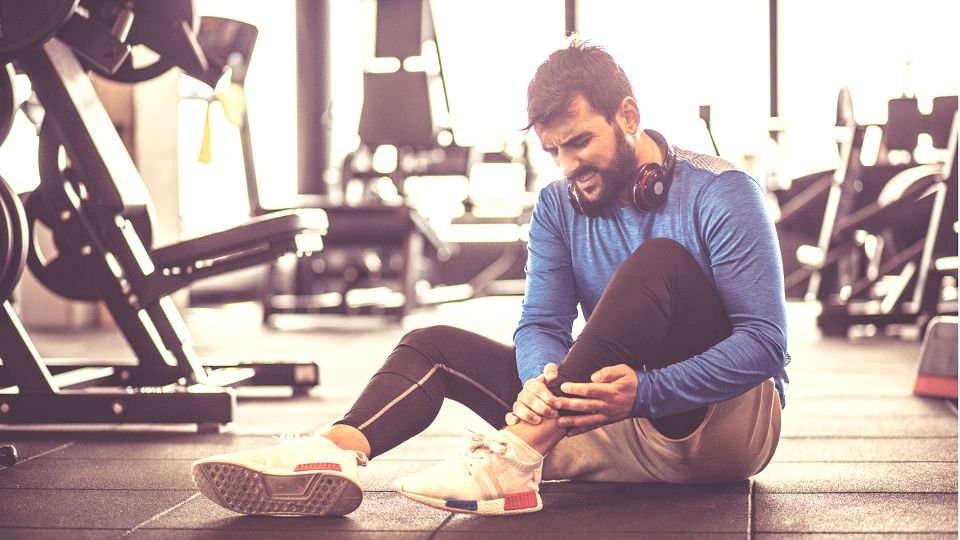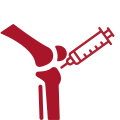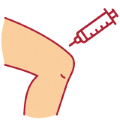Sports Injury Pain
Sports Injury Pain
Sports Injury Pain Relief Treatment in Chennai

What is Sports Injury?
Exercise and sports are prone to causing sports injuries. The prevalence of these injuries is higher among children, but they can also affect adults.
Sports injuries are primarily caused by –
- An injury may occur if you don’t exercise regularly.
- Do not exercise unless you’ve warmed up well. As a result, the cold muscles are prone to stretching and tears. On the other hand, warm muscles are more flexible. Injuries are less likely to occur because Warm muscles can absorb quick movements and bends.
- Contact sports can lead to Sports Injury.
What Can Be Done?
Sports-related injuries are most often caused by:
Sprains –
In a sprain, the ligament that connects two bones in a joint is overstretched or torn.
Strains –
A sprain is caused by straining or tearing muscles or tendons. The tendon connects bones to muscles with thick fibres. Many people confuse strains with sprains.
Knee injuries –
Sports injuries can involve any injury that interferes with the knee joint’s movement. Knee injuries can range from overstretching to tears in the muscles or tissues.
Muscle swelling –
Whenever you suffer an injury, you will experience swelling. Painful and weak muscles may accompany swollen muscles.
Rupture of the Achilles tendon –
In the back of your ankle, there is a thin, powerful tendon called the Achilles tendon. A ruptured or broken tendon can occur during sport. If it happens, you might experience severe pain and difficulty walking.
Dislocations –
A dislocated bone may occur during a sports injury. During this process, the bone is forced out from its socket. As a result, affected areas may swell and become weak.
Rotator cuff injury –
Four pieces of muscle work together to form the rotator cuff. The rotator cuff keeps your shoulder moving in all directions. A tear in any of these muscles can weaken the rotator cuff.
Types of Sports Injuries-
- Acute Injuries – You injure a muscle when you suddenly stretch it beyond its limit. This happens more often on a sports field or while exercising. Depending on how severe they are, the affected part may become inflexible and painful.
- Chronic Injuries – A chronic injury is usually the result of overusing a particular part of the body for a prolonged time. People with chronic injuries may experience soreness, dull aching pain, and pain when performing physical activities.
Is it Time to Seek Medical Help?
Immediately contact your doctor if your sports injury appears or feels severe. Here are some signs you should be aware of:
- Pain and swelling are severe
- Deformities or lumps visible on the skin
- When you use the joint, you hear popping or crunching sounds
- The joint is weak or incapable of bearing weight
- A lack of stability
Treatments for Sports Injuries –
In most sports or injuries, no matter how you got injured, you undergo similar treatment and heal at the same rate.
The PRICE therapy –
The acronym P.R.I.C.E. is used by athletes and trainers to remember how to treat minor injuries. It stands for Protection, rest, ice, compress and elevation.
- Protection – A support will help prevent further injury to the affected area.
- Rest – Rests allows your body’s healing process in an effective way. Reduce your physical activity level and avoid exercise. You will be fragile and vulnerable for the first few hours after sustaining an injury. If you cannot put weight on your ankles or knees, crutches or a walking stick may help. If you have injured your shoulder, a sling may be helpful.
- Ice -Applying ice to an injured area is most beneficial within the first day or two after the injury. This can be accomplished every two to three hours by spending 15-20 minutes in each session. Your injury might be better treated with an ice pack or a towel with ice packs or even frozen peas. As a result, the area will be comfortable and swollen will be reduced by reducing the blood flow. Never put ice directly on bare skin. It can cause Ice Burns.
- Compression – Bandaging the affected area during the day can help reduce swelling. At least some support is provided here, but it is not a complete solution. If it’s too tight, it will interfere with the flow of blood or cause discomfort.
- Elevation – If at all possible, elevate the part of your body injured above the level of your heart. As a result, swelling may be reduced. It Will Recirculate Your Blood to Your Heart.
Medication for pain relief –
- To ease the pain and swelling, pain relievers and over the counter medications, such as paracetamol, can be used.
- To ease pain and reduce swelling, non-steroidal anti-inflammatory drugs (NSAIDs) such as Ibuprofen can also be used.
- Topical Creams can also be considered.
- It is advisable to take aspirin under the supervision of a doctor.
Immobilisation –
- Sometimes, immobilisation reduces movement and thus prevents further injury.
- Besides reducing aches and pains, it also helps to reduce muscle swelling.
- To prevent further movement of the injured part, slings, splints, and casts can be used.
- As a result, healing takes place.
- While extended rest is not advised, you should try to move as gently as possible.
Physical therapy –
- Chronic injuries can be helped through physiotherapy.
- A physiotherapist will guide you to use massage, manipulation, and exercise techniques that will increase mobility, strengthen surrounding muscles, improve the function of an injured area, and return it to its pre-injury state.
- A physiotherapist can make an Exercises Program to help you strengthen the injured part and lessen the risk of recurrence.
Corticosteroid injections –
- Suppose you are a sportsperson and have severe or persistent inflammation. In that case, your doctor may recommend a corticosteroid injection to your fast recovery.
- Injections can have long-lasting effects, sometimes lasting for many years.
- It may be necessary for your doctor to recommend repeated corticosteroid injections. Still, you can usually only get two or three injections per year, depending on your pain condition.
- Infections, thinning of the skin, and fat loss are potential side effects of this injection. Your doctor will provide more information regarding possible side effects.
Surgical Techniques and Procedures –
- While most sports-related injuries do not require surgery, some may require correction, such as badly broken bones. Bones may need to be fixed through manipulation or surgery.
- Realigning displaced bones without surgery may be possible in some cases.
- Surgery is occasionally required for some other injuries as well. When a knee ligament tears, an operation is required.
Regenerative Medicines –
- Most Common Treatment for Sports Injuries include PRP, BMAC Injections, hyaluronic acid, visco supplements, adipose tissue derived and mesenchymal stem injections. These Injections are performed under ultrasound guidance in the injured part.
How to recover from a sports injury-
- In most cases, a full recovery can take many weeks or months, depending on the type of injury you have.
- As soon as possible, it would be best if you started gently moving the injured body part so that you can gradually return to your previous level of activity. It is recommended that you repeat a few simple exercises regularly.
- The movement of the area can be improved with gentle exercises. Stretching and strengthening exercises can be introduced as the pain decreases and movement becomes more accessible.
- Physiotherapists and sports injury specialists can help you. An expert can design a suitable recovery programme and suggest the exercises and repetitions you should do.
Types of Treatments for Sports Injury Pain
Find the best support for all Your Pain Concerns


